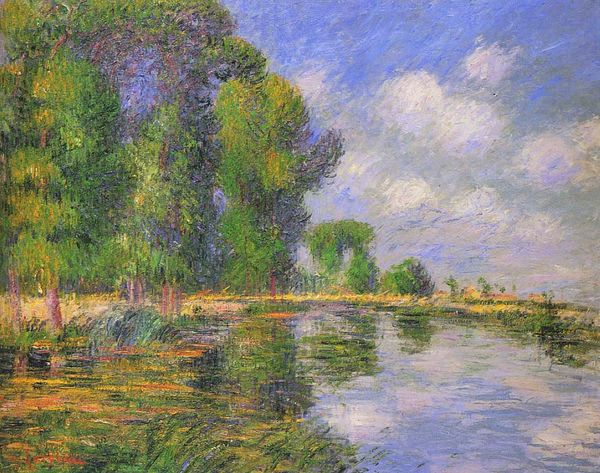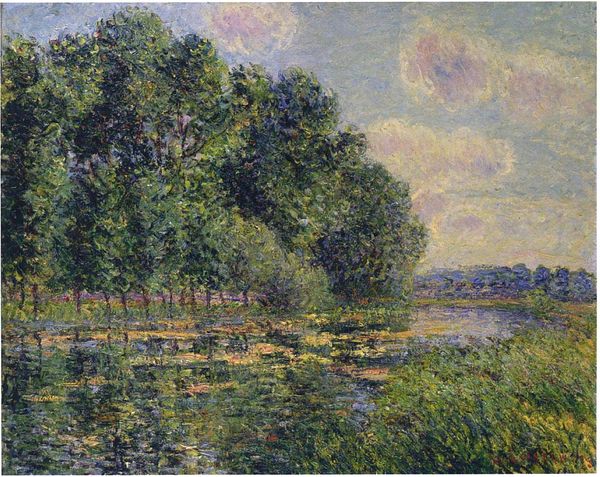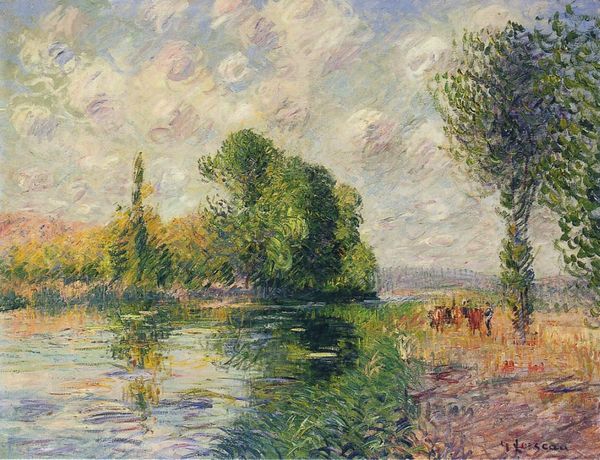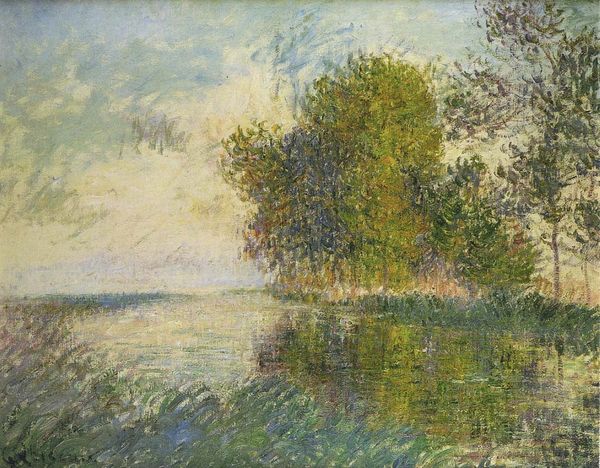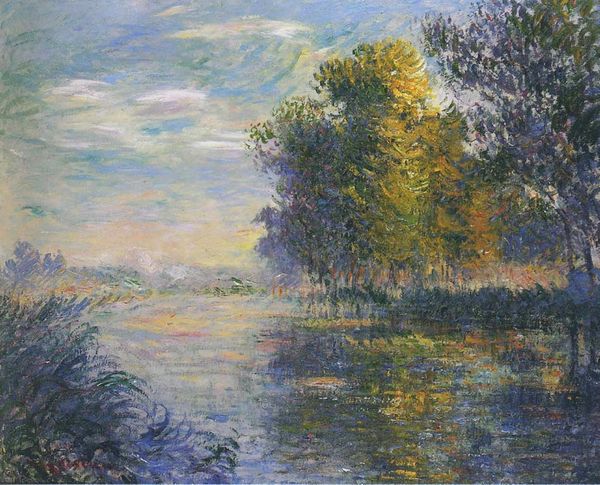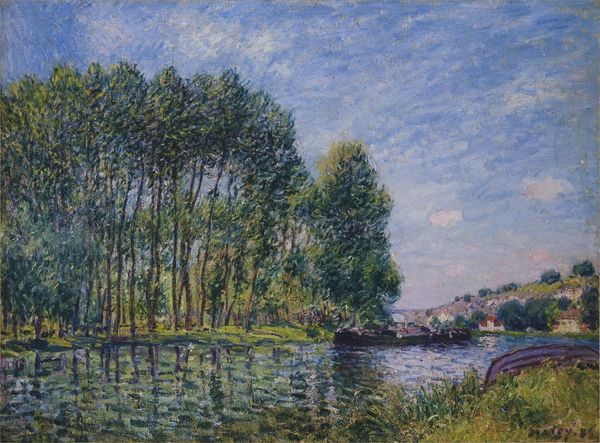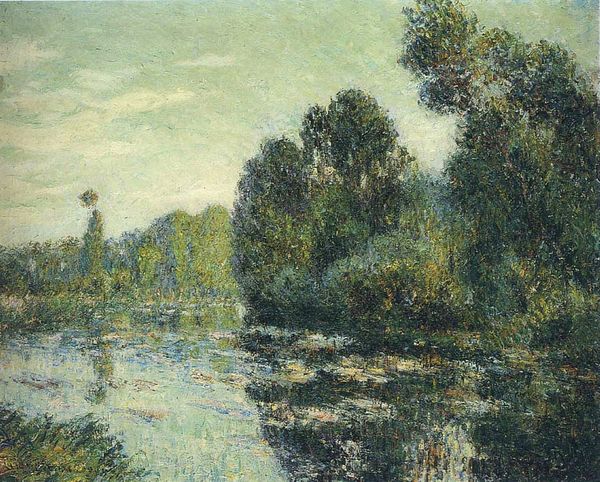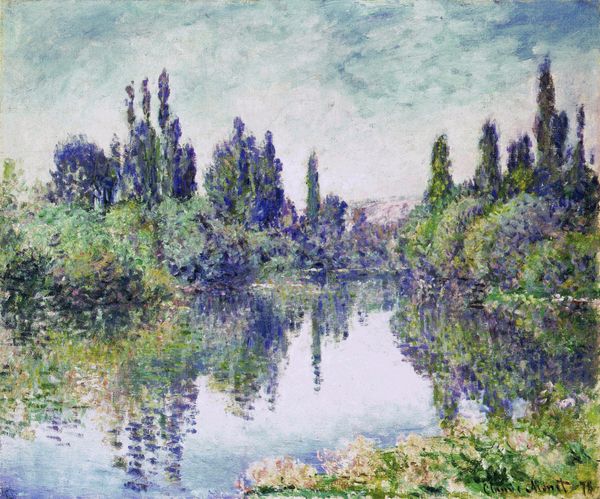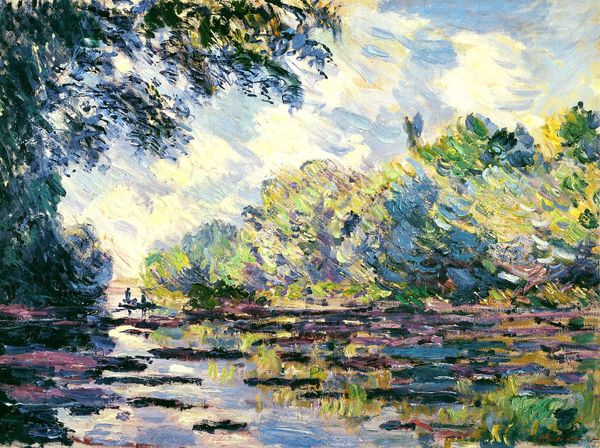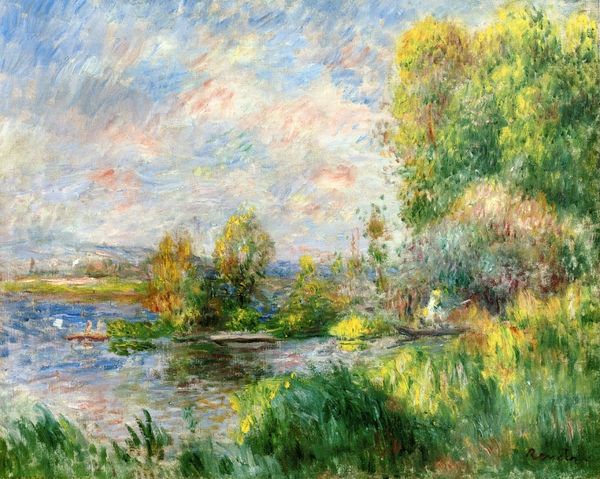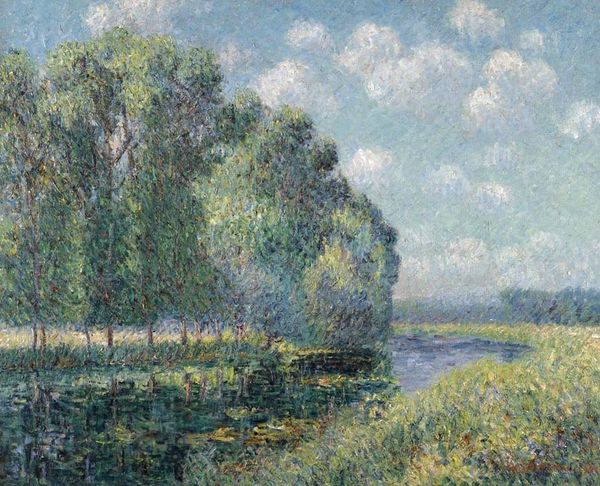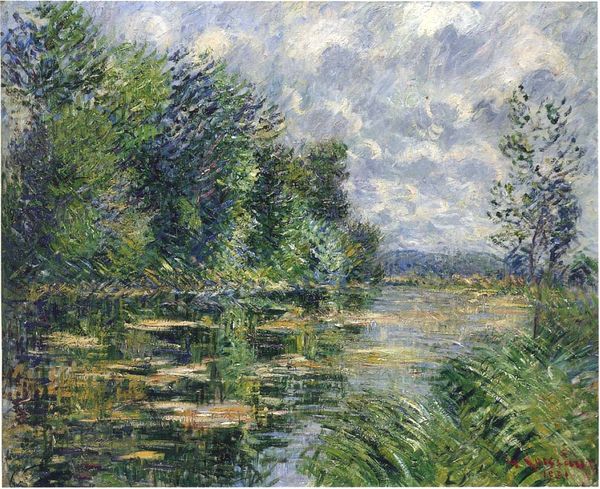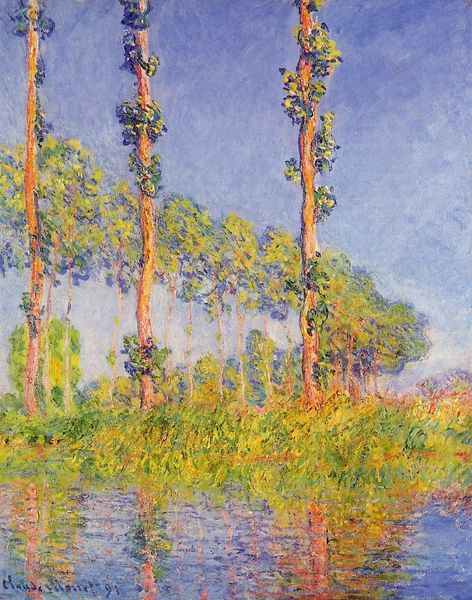
Copyright: Public Domain: Artvee
Curator: Let’s turn our attention to Claude Monet’s "Poplars on the Epte," painted in 1891. It’s a fairly large oil on canvas. What’s your initial impression? Editor: It's like stepping into a daydream, all soft light and shimmery water. The trees are almost ghosts of themselves, reflecting and blurring into the river. It's making me a bit melancholic. Curator: Monet's process here is central to understanding that effect. The application of oil paint is obviously 'en plein air', meaning Monet painted this landscape while standing outside in the location it represents, which gives it this freshness of detail as well as light and texture. But the rapidness of his brushwork also alludes to its commercial aspects, this isn’t exactly just an image of nature but it's also part of art history being produced. Editor: Right, and think about those rapid brushstrokes. They don't just capture light; they capture *time*. You sense the fleeting moment, the exact quality of the air and the artist standing, recording the landscape through a blur of strokes and impressions. Curator: Exactly. The subject itself -- the poplar trees, the Epte river -- are tied to specific industries and transportation networks. Lumber, shipping routes... all part of the economic lifeblood. And in his repeated returns to nature we might notice that Monet might be showing something that may be lost, not just representing what it already is. Editor: That’s interesting, but you're right. It's easy to get lost in the beauty and forget the socioeconomic layer. It's this push-and-pull that gives his work real staying power. As well as, I wonder if he had a favorite tree. He always knew the correct shades for painting the trees he seemed to return to repeatedly. Curator: Indeed, that specific perspective gives this an incredibly charged feel and gives these trees this aura about them. Editor: It gives a whole new light to appreciate what goes on at the landscape when the world is involved in shaping it in terms of the artwork being painted. Curator: I fully agree! Thank you!
Comments
No comments
Be the first to comment and join the conversation on the ultimate creative platform.
